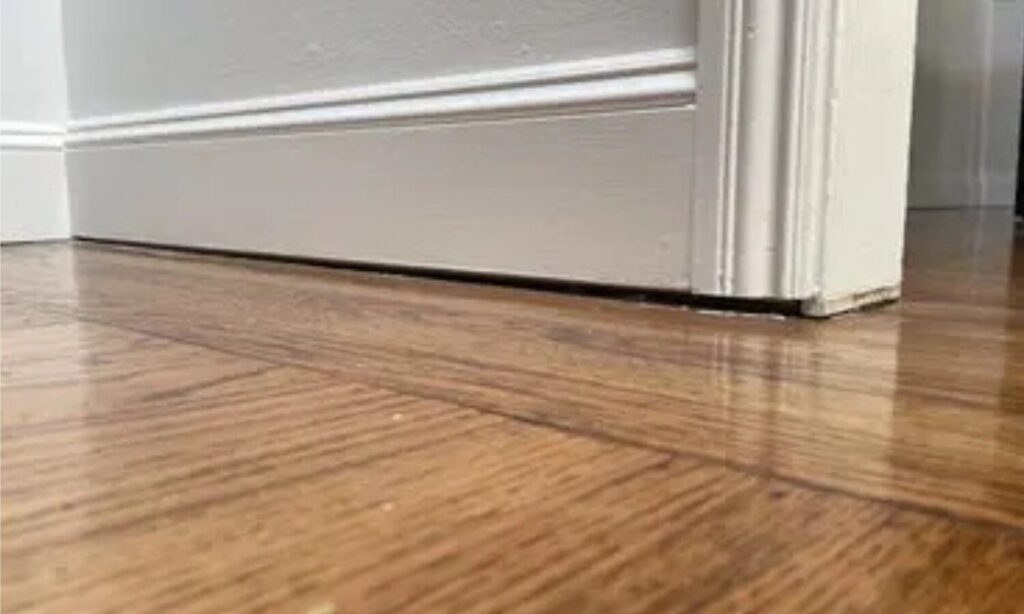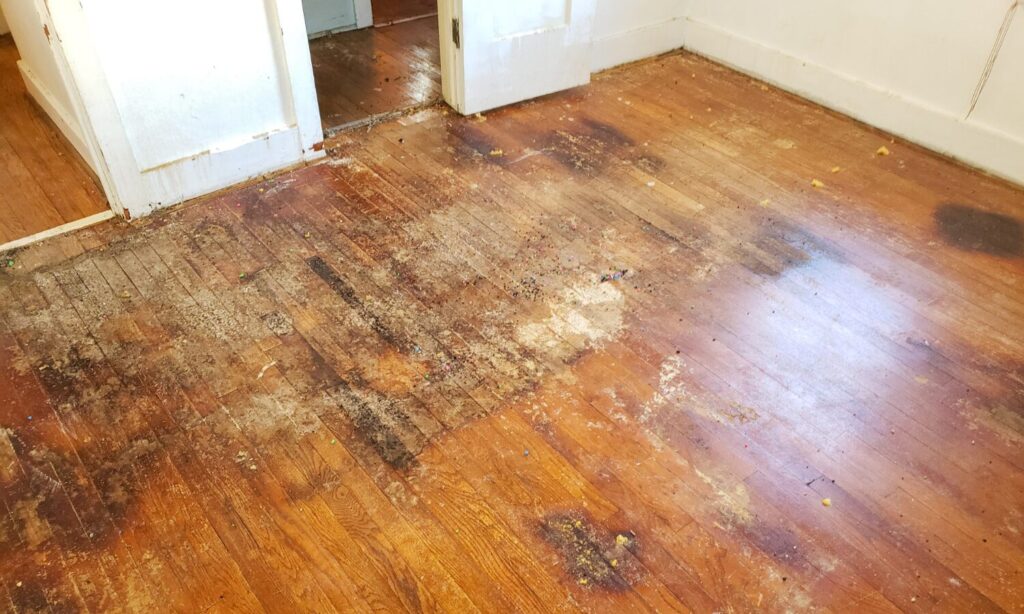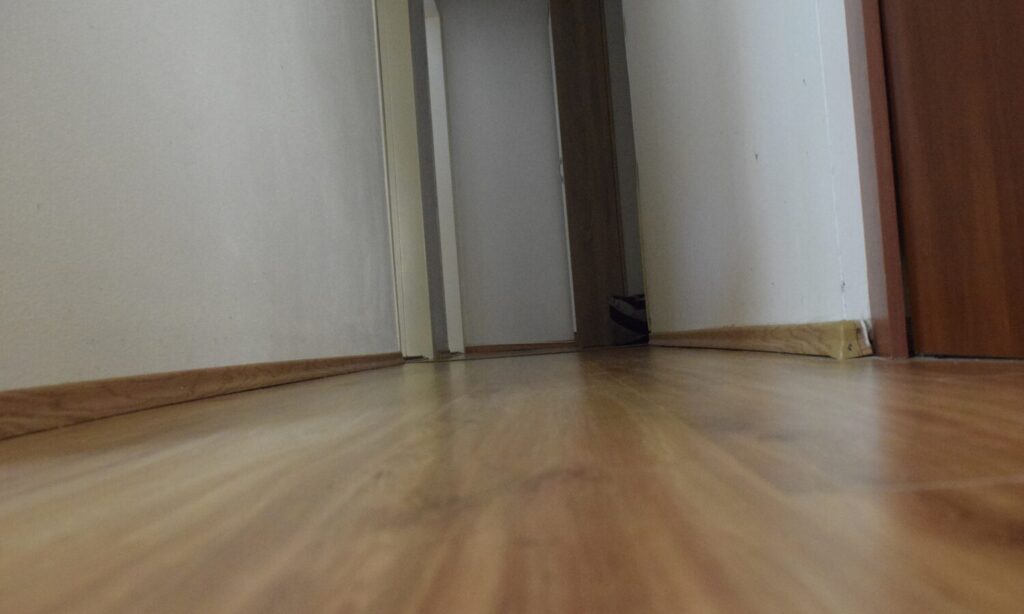
If you own an old or historic home and notice uneven or bouncy floors, you’re not alone. Uneven or sloping floors are one of the most common features found in historic and antique homes, especially those built before modern construction standards (pre-1900). The good news is it’s usually fixable once you understand what’s causing it.
Most Common Causes of Sagging Floors
1. Rotten or Water-Damaged Sills
The sill beam supports the entire house. When moisture gets in, the sill rots and floor joists lose support, causing floors to dip or pull away from the walls.
Learn more about the root of your home’s water damage by reading our blog on the “5 Ways to Prevent Water Damage from Weakening Your Home’s Foundation.”

2. Undersized or Over-Spanned Joists
Older builders used fewer or smaller joists. Add heavy modern loads (tile, appliances, & furniture), and the floors start to sag in the middle.
3. Settling Foundations
Stone or brick foundations shift over time from frost, moisture, or poor support, making floors slope toward one side of the house.
Learn more about settling foundations in our blog “How to Repair a Settling Foundation in Historic Homes: A Guide to Repair and Restoration.”
4. Insect Damage
Powderpost beetles and termites can hollow out beams from the inside, weakening the structure without obvious signs.
5. Temporary or Failing Supports
Stacked bricks, wood shims, or old jack posts were “quick fixes” in the past, but they fail over time, and floors sink again.
6. Basement Moisture
High humidity slowly weakens wood joists and beams, especially in crawl spaces without vapor barriers.
Is It Cosmetic or Structural?
- Slight slope but solid? Usually cosmetic.
- Bouncy floors, cracks, or separation? Structural problem.
- Floor sinking fast? Needs immediate attention.

How Sagging Floors Should Be Fixed
- Inspect the structure (not just the floor).
- Repair/replace sills, joists, or beams.
- Install proper posts on real footings.
- Lift floors gradually to avoid damage.
- Control moisture to prevent future issues.
Note: General contractors often “patch” the floor but ignore the structure. In historic homes, that only hides the problem, which is why you should call a structural restoration expert.
The Bottom Line
Sagging floors are a warning sign, not the main problem. The real issue is almost always structural and fixable with the right expertise.
We Specialize in Structural Repairs for Historic Homes
At Colonial Restorations, we’ve been repairing sills, beams, and foundations in antique homes since 1981. We understand historic framing and fix the source, not just the surface. We’ll assess your home and present the best course of action for the longevity of your home.
Noticing sagging or uneven floors?
Let’s take a look before it gets worse. Call Brad at 508-290-5298 and schedule a structural evaluation today.

Leave a Reply